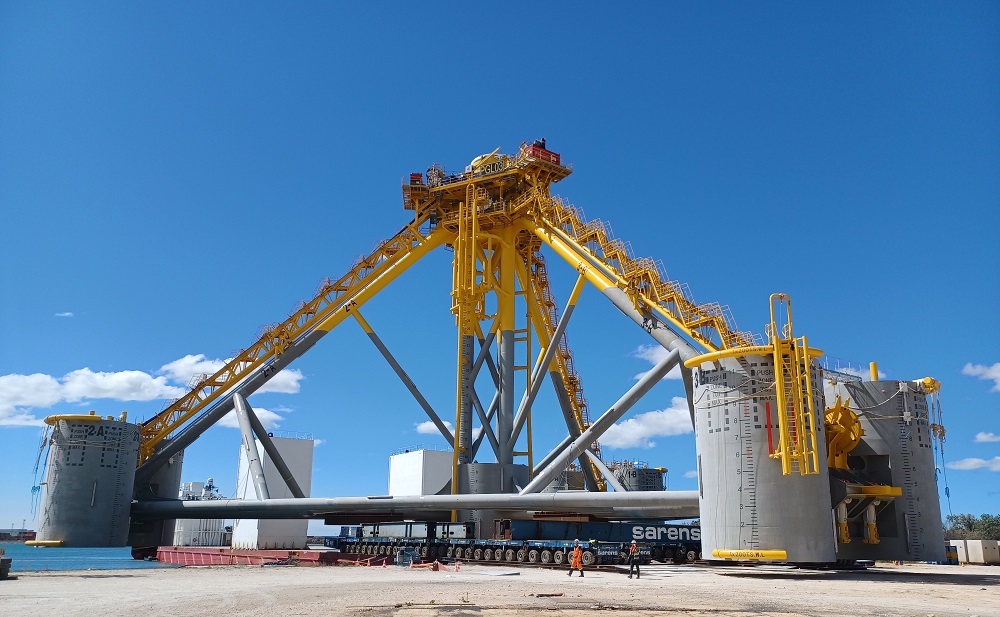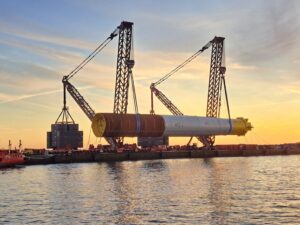The Provence Grand Large offshore wind farm in France is the country’s first pilot floating wind farm. It consists of three 8.4 MW wind turbines from Siemens Gamesa Renewable Energy, placed on pyramid-shaped floating foundations created by SBM Offshore. These innovative floating structures allow for the utilization of previously unusable sea locations.
The floating foundations were assembled at Eiffage Métal’s site in Fos-sur-Mer, forming 45-meter-high tripod-shaped structures based on SBM Offshore’s TLP design. They feature a central buoy, two submersible buoys at each end, and an anchoring system with tensioned lines. After assembly, the components were transported to the installation site 17 kilometers off the coast.
Sarens was commissioned for the first phase of the project, involving the lifting and assembly of the major components of the three floating foundations. They used LR1800 (800T Crawler Crane), CC2500 (500T Crawler Crane), and 20 axle-lines of SPMTs for the work. The cranes lifted and assembled various components, including central buoys, central columns, transition pieces, side buoys, side nodes, and bracings.
In the second phase, Sarens carried out the weighing and load-out of the three floating foundations onto an outgoing barge. They utilized load cells, hydraulic jacks, hydraulic power packs, weighing interfaces, K24ST SPMTs arranged in two trains, maxi powerpacks, auxiliary SPMTs, and modular beams.
Each floating foundation weighed around 2800T, stood 45 meters high, and was 70 meters wide. The foundations were positioned on a semi-submersible barge using the SPMTs. The equipment was transported and assembled on site within a week. The floating foundations were then loaded onto the barge with the help of a crew working in two shifts, under the supervision of SBM Offshore’s team responsible for the load-out and float-off activities.






